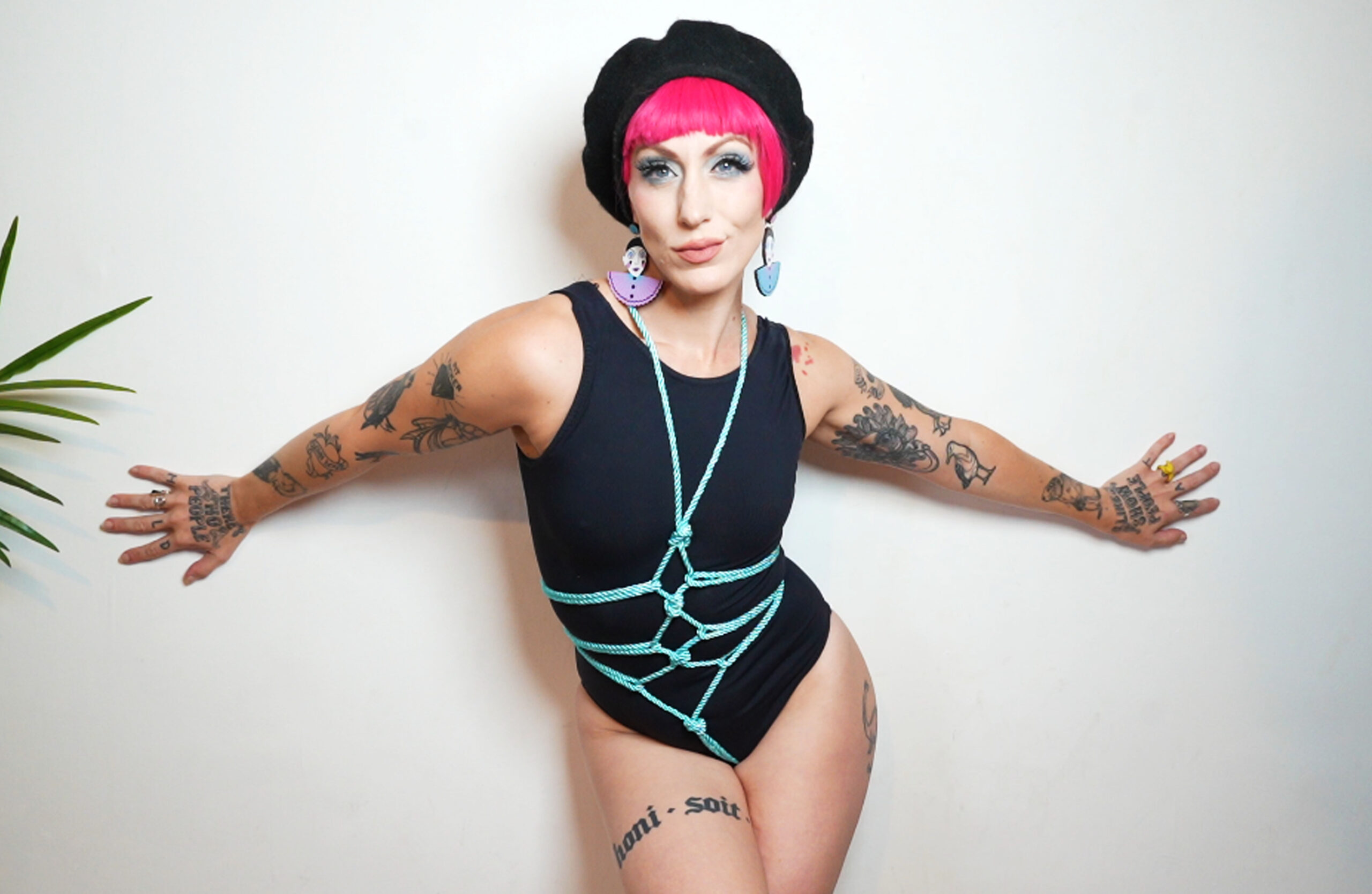The Concept of Metamour
The concept of metamour plays a significant role in polyamorous dynamics, particularly within non-monogamous relationships that involve multiple romantic partners and/or sexual connections. While often used interchangeably with “third person,” the term metamour specifically refers to an individual who is not part of one’s primary relationship but has a close personal connection to one or more people in the relationship.
Defined Relationship
A metamour is an individual who is aware of and has a relationship with one’s partner’s partner or spouse, often referred to as a “metamourship.” This concept can be complex and nuanced within the context of polyamorous dynamics, where multiple romantic relationships exist simultaneously.
Metamours can serve various roles in a polyamorous network, ranging from being a supportive friend and confidant to being an integral part of the emotional landscape. They may provide comfort, emotional support, or even facilitate communication between partners who are close but not directly connected.

Metamourships can also involve shared experiences, activities, and social interactions, which can deepen the connection with the partner’s partner and foster a sense of community among all parties involved. Some metamours may also become an extension of one’s own personal network, offering advice, guidance, or simply being present during times of need.

However, the role of metamours within polyamorous dynamics can also raise questions about boundaries, jealousy, and emotional intimacy. Establishing clear communication channels, setting boundaries, and navigating potential conflicts is essential for maintaining healthy relationships between all parties involved.
Furthermore, metamourships can be influenced by societal norms, cultural expectations, and individual values. For instance, some people may view metamours as “third wheels” or feel uncomfortable with the idea of being in a relationship with someone who is already in a committed partnership.
Emotional Dynamics
In polyamorous relationships, the concept of metamour plays a significant role in navigating emotional dynamics and maintaining healthy relationships within the community.
A metamour is an individual who is not part of one’s immediate romantic or sexual relationship, but with whom they have a close emotional connection. In polyamory, metamours can be partners of one’s partner(s), friends, family members, or acquaintances. The dynamics surrounding metamours can vary greatly depending on the specific circumstances and the individuals involved.
Some people view metamours as having a unique role in their partner’s life, often serving as confidants, advisors, or emotional support systems. Metamours may provide a safe space for their partner to discuss feelings, desires, or concerns that they cannot share with their primary partners. This can create strong bonds between the metamour and their partner.
However, others may view metamours as outsiders who are not privy to the inner workings of the primary relationship. In these cases, there may be jealousy, insecurity, or feelings of betrayal when a metamour becomes too close to one’s partner. Communication is key in such situations, and establishing clear boundaries and guidelines can help mitigate potential conflicts.
It is essential for individuals involved with multiple partners to prioritize open and honest communication about their feelings, desires, and concerns related to their metamours. This includes discussing boundaries, emotional labor, and the impact of interactions on all parties involved. By doing so, they can foster a more positive and supportive community where everyone’s needs are respected and valued.
The Role in Polyamorous Relationships
The concept of metamourning has become increasingly relevant in modern polyamorous relationships, where individuals navigate complex webs of intimacy and connection. As polyamory evolves beyond its initial reputation as a niche or fringe lifestyle choice, understanding the roles and emotions involved for all parties involved – including the primary partners, secondary partners, and their respective metamours (the partner’s partner) – is crucial for building healthy, fulfilling relationships.
Metamours often occupy a unique position within polyamorous dynamics, existing outside of the traditional romantic relationship yet deeply embedded in its emotional landscape. Their experiences and emotions can vary widely, ranging from feelings of support and inclusion to anxiety, jealousy, or even resentment. This article will explore the role of metamours in polyamorous relationships, examining both the benefits and challenges they present, as well as strategies for navigating these complex relationships with empathy, understanding, and open communication.
Communication and Conflict Resolution
In polyamorous relationships, metamours play a significant role as a mediator between two partners and can either strengthen or destabilize the dynamics of the relationship.

Metamours are typically defined as the spouses or partners of one’s partner. They often occupy a unique position in polyamorous relationships, navigating multiple relationships simultaneously and requiring careful communication to manage their roles effectively. Effective communication is key to resolving conflicts between metamours and preventing misunderstandings that can arise from differing expectations or loyalties.
Conflict resolution skills are crucial for managing the complex dynamics of polyamory, particularly when dealing with metamours. This may involve negotiating boundaries, addressing jealousy or insecurity, and finding common ground between partners who have competing interests. Active listening, empathy, and trust-building are essential in resolving conflicts that arise from differing opinions or values.
Moreover, clear communication can prevent the emergence of negative emotions such as resentment or bitterness towards metamours. This can lead to a more stable and secure polyamorous environment for all parties involved. By acknowledging the emotional impact of metamour relationships on both partners, it’s possible to create a supportive system where everyone feels heard, valued, and understood.
Ultimately, the role of metamours in polyamorous dynamics requires a high degree of communication, empathy, and trust-building between all parties involved. By establishing clear boundaries, actively listening to each other, and prioritizing open communication, it’s possible to build strong relationships that foster growth, understanding, and harmony among all individuals.

Navigating Jealousy and Resentment
In polyamorous relationships, metamours can play a significant role in shaping the dynamics of the relationship network. A metamour is someone who has a close relationship with one’s partner outside of the romantic partnership itself. For example, a friend of one’s partner or their family member. Metamours can be an integral part of polyamorous relationships, providing emotional support, practical assistance, and social connection.
- Metamours can bring unique challenges to polyamorous relationships. Jealousy and resentment can arise when metamours are perceived as a threat to the primary relationship or when they receive preferential treatment from one’s partner.
- A key aspect of navigating these dynamics is clear communication and boundaries setting among all parties involved. Metamours should be aware of the emotional boundaries and expectations within their relationship with one’s partner, while partners should also communicate openly with their metamour about what they are comfortable with and what triggers feelings of jealousy or insecurity.
- Building trust and respect between metamours and partners is crucial for a harmonious coexistence. Metamours can play an important role in supporting the primary relationship by providing a support network, helping with childcare or household responsibilities, or serving as an emotional confidant.
- Fostering open communication and empathy among all parties involved can help mitigate jealousy and resentment that may arise. This can include regular check-ins, discussing feelings and concerns, and actively listening to one another’s perspectives.
In addition, establishing clear expectations and agreements regarding interactions with metamours can help prevent misunderstandings and conflicts. Partners should discuss their own boundaries, desires, and expectations for interactions with their metamour, ensuring everyone is on the same page and minimizing feelings of resentment or jealousy.
The Impact on Personal Boundaries
The complexities of polyamorous relationships can often center around the delicate balance between different types of emotional investments. A critical aspect of navigating these dynamics is understanding the role of metamours, individuals who are intimately related to one’s partner through blood or marriage, yet do not have a romantic relationship with that person themselves.
Respecting Personal Space
When navigating complex polyamorous relationships, understanding the role of metamours (partner’s partner) can significantly impact personal boundaries and respect for personal space.
In traditional monogamous relationships, partners have a clear expectation of exclusivity and control over their intimate lives with their spouse. However, in polyamorous dynamics, this dynamic is reversed, and multiple romantic connections are simultaneously maintained. As a result, the metamour’s role can be both a blessing and a challenge for individuals involved.
The impact on personal boundaries can be substantial when considering that a partner’s partner becomes an integral part of their life. This blurs the lines between intimate relationships and friendships, making it increasingly difficult to maintain clear boundaries. The metamour may feel like an extension of the primary relationship, often finding themselves entangled in emotional obligations and expectations.
Moreover, the expectation that a metamour should be on good terms with their partner can put undue pressure on individual relationships, creating tension and stress within the family unit. When personal space is compromised due to this dynamic, individuals may struggle to maintain healthy boundaries, potentially leading to feelings of resentment and frustration.
A delicate balance must be struck in polyamorous dynamics to respect each partner’s autonomy while navigating the complex web of relationships. Communicating openly with all parties involved and establishing clear boundaries is crucial in maintaining a harmonious and respectful environment for everyone concerned.
Navigating Intimate Relationships
In polyamorous relationships, the presence of metamours can significantly impact an individual’s sense of personal boundaries and overall relationship dynamics.
The term “metamour” refers to a partner’s new romantic or intimate partner, often introduced after an existing relationship has formed. This dynamic can raise concerns about emotional loyalty, trust, and intimacy within the original couple. Metamours may become entangled in the emotions and conflicts of both partners, which can blur personal boundaries and create tension.
When navigating intimate relationships with metamours, individuals must establish clear boundaries to maintain emotional and physical intimacy within their primary relationship. This involves setting expectations, communicating openly about needs and desires, and establishing a sense of respect for each partner’s autonomy.
A strong network of communication and trust is crucial in managing the role of metamours in polyamorous relationships. Couples must discuss the importance of maintaining individual boundaries while still fostering emotional connection with their new partner. This delicate balance can be challenging to navigate, but it allows individuals to build fulfilling connections within their relationships.
The impact of metamours on personal boundaries can also depend on the type of relationship and the level of involvement between the partners. For instance, in some cases, having a metamour may strengthen emotional intimacy within a polyamorous relationship, while in others, it may create feelings of insecurity or jealousy.
Buy cock straps and harnesses for better control and pleasure at Peaches and Screams Buy plus-size costumes for a flattering, sexy look at Peaches and Screams Buy Pearl Vibrators for powerful and luxurious stimulation at Peaches and Screams Explore sex lubricants for smooth and sensual experiences at Peaches and Screams Buy Mandy Mystery lingerie for seductive and mysterious styles at Peaches and Screams Explore plus-size camisole sets at Peaches and Screams Explore sex swings and machines for thrilling action at Peaches and Screams
Hopeless Book Madison Art Therapy Elizabeth Rohrbaugh Press on Honey K’s P Rules Cakes
- Upper Face Anti Wrinkle Treatment Near Chelsham, Surrey - January 5, 2025
- Upper Face Anti Wrinkle Treatment Near Kempton Park, Surrey - January 3, 2025
- Revving Fetish: The Sensory Excitement Of Engine Sounds - January 2, 2025